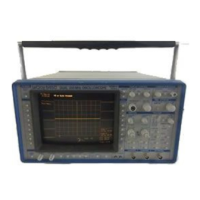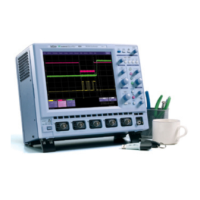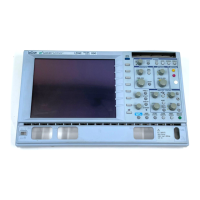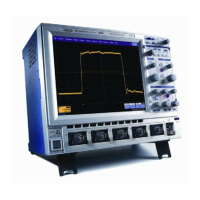It can be considered that the energy of the signal at some frequency
n is distributed 50/50 between the first half and the second half of
the spectrum; the energy at frequency 0 is completely contained in
the 0 term.
(6)
The sixth step is the elimination of
results. Only the first half of the
Nyquist frequency is kept:
the redundant part of the
spectrum (Re, Im), 0 to the
R’ = 2 * ~n 0 < n < N/2
I
’n
= 2 *
0 < n < N/2
n n -
(7)
The seventh and last step is the computation of the waveform to be
displayed.
If you select the Real Part or Imaginary Part Display Type, no
further computation is done: the displayed waveform is R’ or I’ as
defined above.
If you select Magnitude mode, the magnitude is computed as:
!
M = | R
’2
+ I
’2
n~ n n
In practice, the steps described above lead to the following
result:
An AC sine wave of amplitude 1.0 V and an integral number
of periods in the time window, transformed with the
rectangular window, results in a fundamental peak of 1.0 V
magnitude in the spectrum.
However, a DC component of 1.0 V, transformed with the
rectangular window, results in a fundamental peak of 2.0 V
magnitude in the spectrum.
The displayed waveforms for the other available modes are computed
as follows:
Phase: angle = arctan (In/Rn) ~n
>
M .
angle = 0 < Mm~
n
n - mln
where M is the minimal magnitude, fixed at about 10
-3
of the full
scale ~e. 64 units on the scale of 65536, 16 bits), at any gain
setting.
11-14
Fast Fourier Waveform Processing
Option (WP02, V 2.06FT)

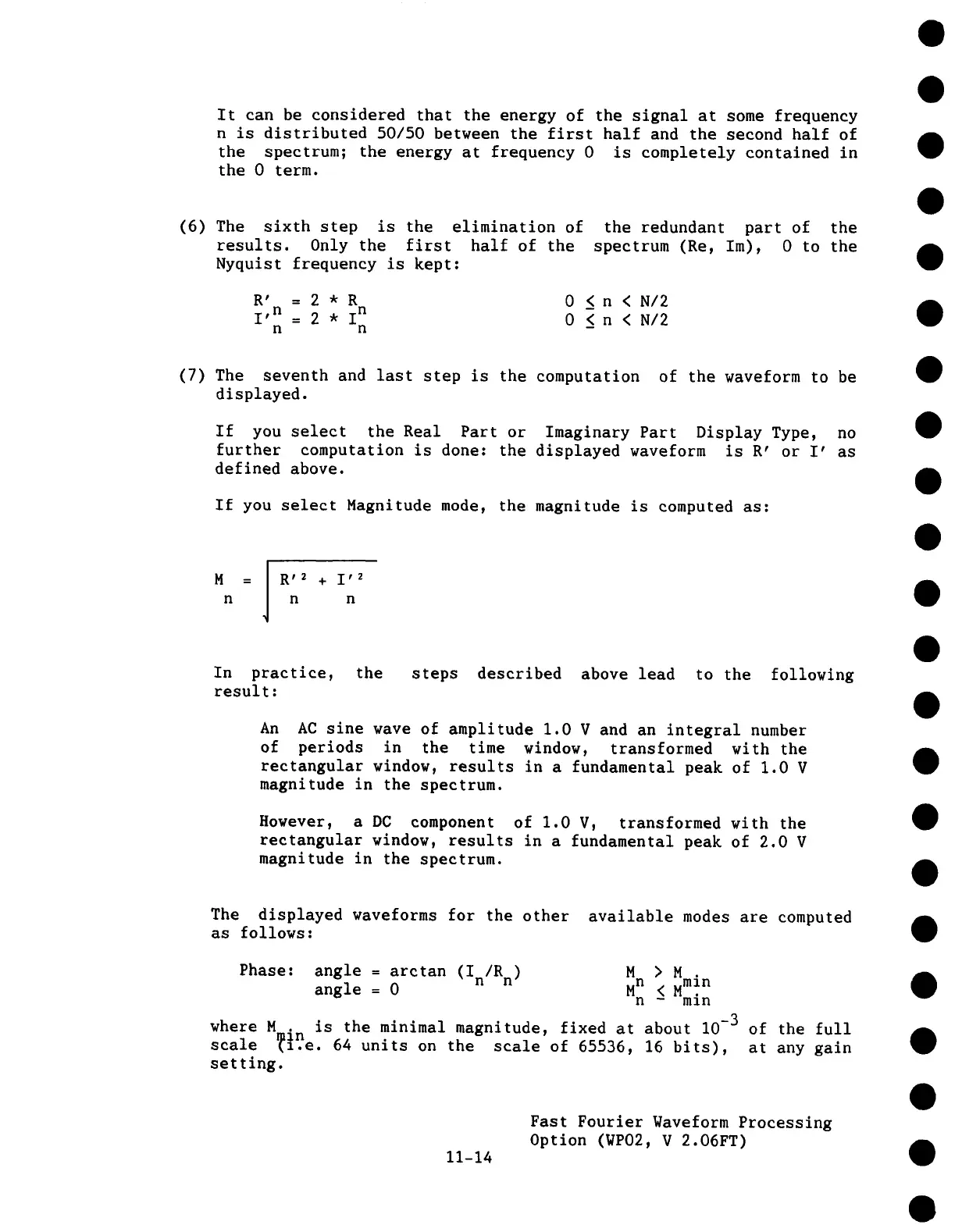